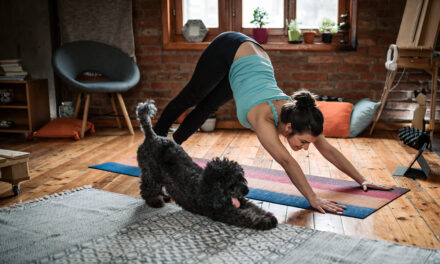Once upon a time, in a land just a few decades back, children played outdoors. Parents would send them into the backyard to play tag, on a bike ride to their friend’s house a few blocks away, or to the local basketball courts, with only “Be back when it gets dark” as a farewell. Kids were active, and it showed: Childhood obesity rates were low, and only adults had type 2 diabetes.
However, many of today’s parents don’t feel safe just sending their kids out into the neighborhood unsupervised. That, coupled with hours of tech time on mobile devices and game consoles, plus an increasing reliance on fatty, salty, sugary convenience foods, and obesity rates have more than doubled in children and quadrupled in adolescents in the past 30 years. Now more than one in three are overweight or obese. According to clinical dietitian Elizabeth Canepari, MS, RD, Pediatric Nutrition & Wellness coordinator at Capital Health, the pediatric obesity rate in Trenton, N.J., is even higher—a discouraging 50 percent—which she attributes to limited access to fresh fruits and vegetables, reduced access to outdoor activity, and a lack of parental awareness.
As a result, doctors are diagnosing kids with high blood pressure, elevated cholesterol, prediabetes, and other heart disease risk factors. Beyond the physical impact, “it takes a toll on their mental, social, and emotional health,” Canepari says. “Obese kids are at greater risk for depression, low self-esteem, behavioral problems, and being bullied.”
It doesn’t have to be this way. Whether we’re leading by example or gently encouraging from the sidelines, parents have the power to amp up our younger generation’s activity levels and simultaneously boost their odds for a bright, healthy future.
Start Early
Capital Health family physician Jill Young, DO, has seen obesity’s devastating impact firsthand, treating preteens for prediabetes and high cholesterol. It’s been prime motivation for her and her cardiologist husband to involve their 6-year-old twin daughters and 4-year-old son in exercise from the get-go. “I took our daughters out in a jogging stroller when they were just a few weeks old,” she recalls. “Now, we’ll take family bike rides on the weekend, or the kids will bike and my husband and I will jog alongside them. The more excited you are about exercise, the more excited your kids will be.”
Jill Hoefs, a physical therapist and mom living in Summit, N.J., throws Frozen dance parties with her two young kids, attends family swim at the YMCA, or finds an open gym and plays tag and hide-and-go-seek for an hour. In the winter, they go sledding, and son Aiden, 5, “has to carry his sled back up the hill until he is too tired to walk,” she explains. Everyone wins: Aiden gets hot chocolate and then takes a 2-hour nap for mom and dad.
Get Them Outside
Dr. Young encourages parents to take advantage of active possibilities in their own backyard: Swimming or kayaking at the Jersey Shore, hiking on trails, apple picking in the fall, and skiing in the wintertime. Even hitting the local park counts as exercise; it takes strength and endurance to climb those towers and swing across monkey bars. Plus, “Remember when you used to jump off a playground structure and would feel the impact radiate throughout your body?” Canepari asks. “That kind of impact is what strengthens bones, which grow so quickly during childhood and adolescence.”
Practice Stealth Health
You needn’t explicitly tell your kids, “Physical activity is important” (though you certainly can; Dr. Young says preschoolers are old enough to understand that we exercise to keep our muscles strong and take care of our body). Simply weave it into your family’s daily routine—the possibilities are so fun that no one will even realize they’re working out. Bring the clan to an indoor trampoline park like Sky Zone or Rebounderz and jump around. Sign the kids up for summer camp. If your child is addicted to the computer, Donovan Green, author of No Excuses Fitness and a father of three, recommends buying them a Wii Fit. “Then do it with them,” he encourages. “Look silly, make them laugh. They’ll enjoy it even more, plus laughter works your abs.” Kite flying and household chores all count as stealth health, too.
Be Prepared for Pushback
If your best efforts are met with excuses, try these expert-vetted tips:
For kids who aren’t drawn to organized sports, introduce them to more individualized activities like tae kwon do, tennis, golf, swimming, and running—they have more of a solo feel while maintaining the sense of camaraderie that comes with team sports.
If your daughter or son is worried about looking uncool (common in middle school girls), set them up for success with activities you know they’ll flourish in: A dance DVD for your daughter with a great sense of rhythm or indoor rock climbing for your adrenaline-junkie son. More important, though, is breaking the “exercise isn’t cool” stigma. “Show them pictures of sweaty athletes or musical performers, and explain how important it is for them to be in good shape so they can perform,” Canepari says. “Let your kids know it’s cool to be active and have a sweaty brow; it’s not cool to sit on the bleachers and do nothing.”








